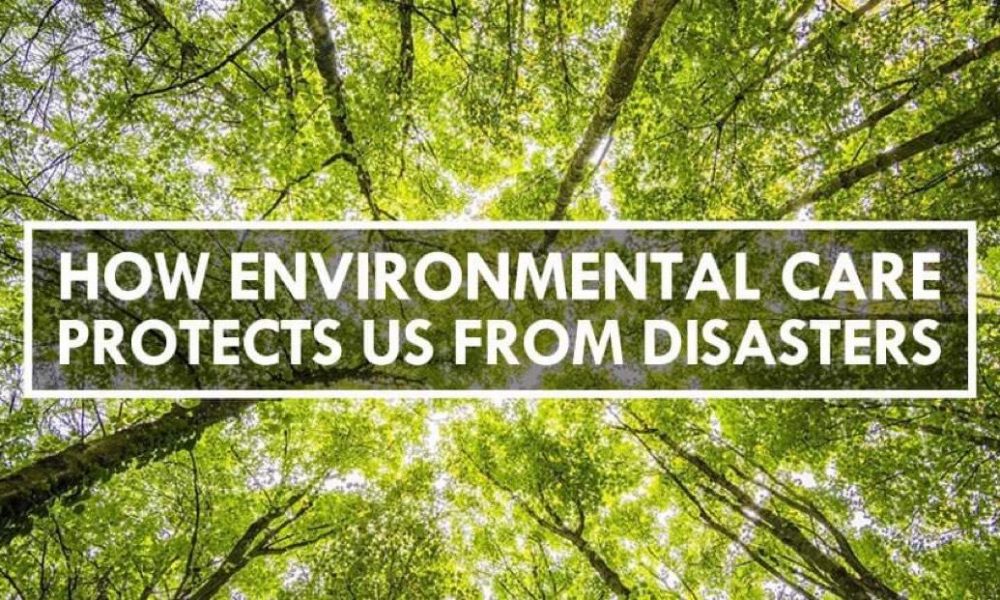Home > Blog > Environment
How Environmental Care Protects Us From Disasters

Earth Day is less than a week away with this year’s theme of “Restore the Earth.” Earthday.org expounds on it by saying, “Together, we can prevent the coming disasters of climate change and environmental destruction. Together, we can Restore Our Earth.”
It is a fitting theme after the World Meteorological Society (WMO) declared 2011-2020 as the hottest year on record. Ocean heat is also hitting record levels due to greenhouse gas emissions. WMO Secretary-General Prof. Petteri Taalas explained, “In 2020, the annual Arctic sea ice minimum was among the lowest on record, exposing Polar communities to abnormal coastal flooding, and stakeholders such as shipping and fisheries, to sea ice hazards.” In a Panahon TV feature, PAGASA Hydrologist Rosalie Pagulayan warned that excess ocean heat may also fuel stronger tropical cyclones (bagyo). “Warmer oceans result in more evaporation. When there’s more moisture in the atmosphere, this could lead to intensified tropical cyclones. This means stronger rains, storm surges, and the possibility of tornadoes. Coastal communities will be inundated even those that do not usually experience floods.”
 Warmer oceans lead to intensified tropical cyclones. (Photo by Ricardo Esquivel from Pexels)
Warmer oceans lead to intensified tropical cyclones. (Photo by Ricardo Esquivel from Pexels)
As the planet heats up, more climate-related disasters occur. The United Nations Office for Disaster Risk Reduction (UNDRR) reported that in the last 20 years, floods have doubled while storms increased by almost 40 percent. Major increases were also observed in droughts, wildfires and extreme temperature events.
Volcanic Eruptions and Earthquakes
The Philippines sits in the Pacific Ring of Fire, an area that experiences the most number of earthquakes and volcanic eruptions. But according to this article, climate change might also have an effect on such disasters. It mentions a study that links small earthquakes to typhoons in eastern Taiwan, suggesting that decreased atmospheric pressure, which comes with typhoons, may cause earthquake faults to loosen and create tremors.
Meanwhile, a study from the University of Miami proposes that tropical cyclones and earthquakes are connected. It suggests that excess rainfall leads to landslides, which in turn reduces the weight on the fault below the earth’s crust, causing it to be more volatile.
 Taal Volcano is currently at Alert Level 2 according to PHIVOLCS.
Taal Volcano is currently at Alert Level 2 according to PHIVOLCS.
But how about volcanic eruptions? With Taal Volcano in Batangas currently at Alert Level 2, and its January 2020 eruption still fresh in our minds, should we be worried about climate change stimulating volcanic activity? The same article mentions the possibility of heavy rains triggering eruptions of the Soufrière Hills in Montserrat, and seasonal changes affecting Pavlof Volcano in Alaska.
However, in a Panahon TV interview, Dr. Renato Solidum Jr, officer-in-charge of the Philippine Institute of Volcanology and Seismology, and undersecretary for Disaster Risk Reduction and Climate, stated that global warming has no effect on earthquakes and current volcanic activities in the country. “Volcanic eruptions are caused by magma beneath the earth, and not by the Sun,” he explained in Filipino. “The same goes for earthquakes, which are caused by fault movement. This energy pushes the plates around the fault.”
But Solidum was quick to stress the fatal combined effects of volcanic eruption and extreme rainfall. “Because of global warming, evaporation is sped up, causing more rainfall. When a volcano has just erupted and is followed by rain, the water combines with the spewed-out ash and becomes lahar.” This was exactly what happened when Typhoon Diding followed the Pinatubo eruption in 1991, causing lahar attacks in Pampanga, Tarlac and Zambales, and burying entire towns.
Heavy rains can also exacerbate earthquake impacts. “Heavy rains can already cause landslides,” said Solidum. “But if an earthquake occurs while it’s raining, there might be stronger and more frequent landslides. Many more people will be affected.”
 Residents in Rizal wade through flood caused by Typhoon Ulysses in November 2019
Residents in Rizal wade through flood caused by Typhoon Ulysses in November 2019
Environmental Care is Disaster Preparedness
Though geologic events such as earthquakes and eruptions happen naturally with or without climate change, Solidum explained how manmade activities can worsen their impacts. “Landslides occur in steep places or those with soft ground. Destroying our mountains through deforestation or housing developments leads to faster erosion and lowland flooding. The eroded soil along with improper waste disposal fill up our rivers and drainages, also causing floods.”
Solidum recalled the landslide that occurred in a subdivision in Antipolo, Rizal in 1996, which caused over 300 buried houses and 60 deaths. “The landslide was traced to the ground being disturbed during development. When heavy rains fell, the already loosened ground eroded. The disaster was human-influenced. That’s why houses shouldn’t be built on stiff slopes. The improper placement of septic tanks and drainages can also cause soil erosion.”
More recently, Cagayan province experienced massive floods after the onslaught of Typhoon Ulysses in November 2020. Though fingers were pointed at Magat Dam’s release, environmental groups also cited quarrying and illegal logging in the Sierra Madre mountain range as a major cause of the disaster. Cagayan Governor Manuel Mamba also faulted the heavy silt in Cagayan River for causing floods that resulted in 29 deaths.
Though it is vital to prepare for disasters with go bags and other preventive measures, Solidum stated that environmental care is just as important. “Protecting our environment is equivalent to caring for our communities and ourselves, so we can better prepare for natural hazards. These hazards become more fatal if we don’t care for our environment. Environmental care should be part of our disaster preparedness.”
Read up on how plastic pollution harms our health and environment, and take our quiz to find out how much of a zero-waste advocate you are.

